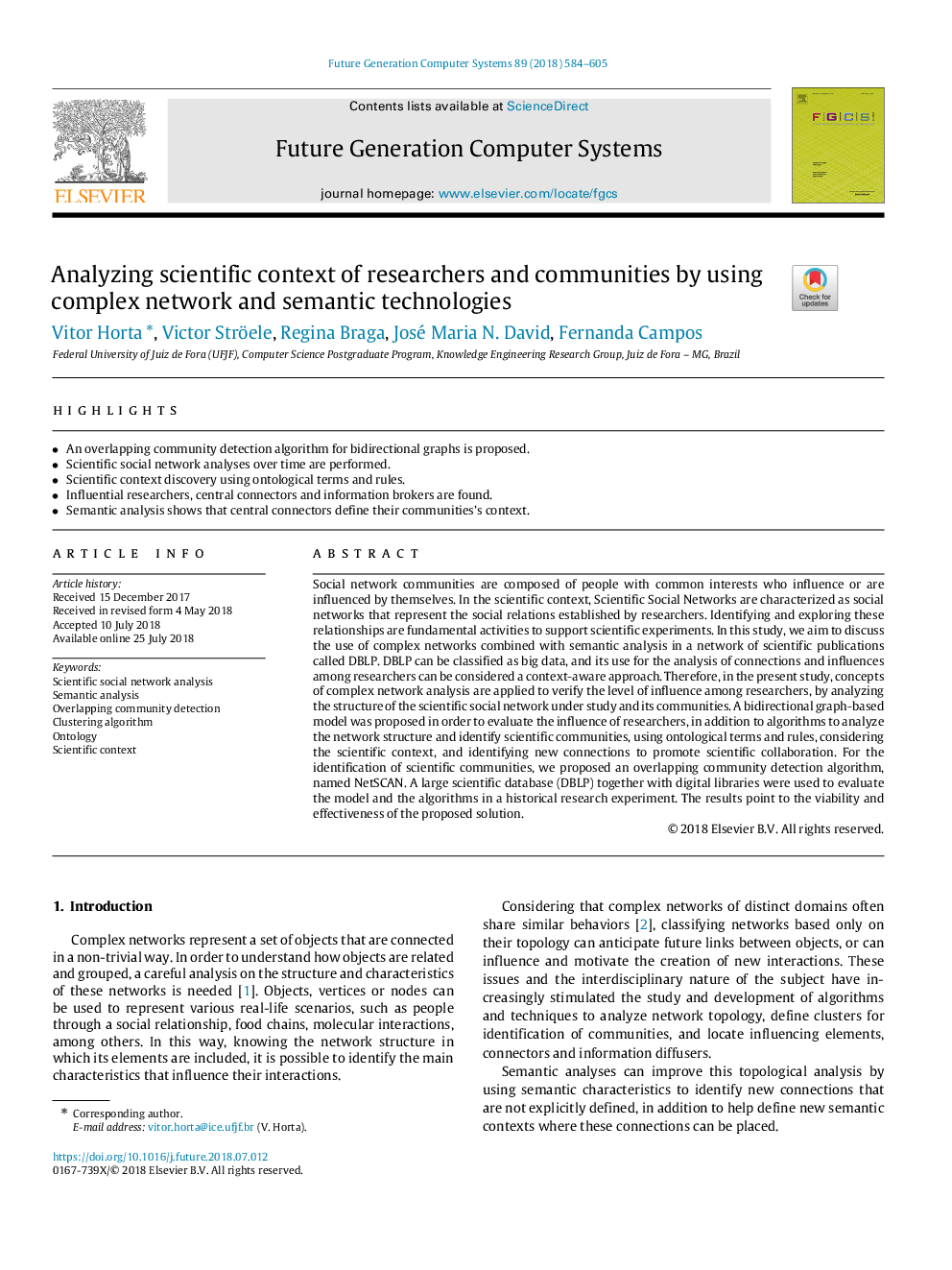| Article ID | Journal | Published Year | Pages | File Type |
|---|---|---|---|---|
| 6872848 | Future Generation Computer Systems | 2018 | 22 Pages |
Abstract
Social network communities are composed of people with common interests who influence or are influenced by themselves. In the scientific context, Scientific Social Networks are characterized as social networks that represent the social relations established by researchers. Identifying and exploring these relationships are fundamental activities to support scientific experiments. In this study, we aim to discuss the use of complex networks combined with semantic analysis in a network of scientific publications called DBLP. DBLP can be classified as big data, and its use for the analysis of connections and influences among researchers can be considered a context-aware approach. Therefore, in the present study, concepts of complex network analysis are applied to verify the level of influence among researchers, by analyzing the structure of the scientific social network under study and its communities. A bidirectional graph-based model was proposed in order to evaluate the influence of researchers, in addition to algorithms to analyze the network structure and identify scientific communities, using ontological terms and rules, considering the scientific context, and identifying new connections to promote scientific collaboration. For the identification of scientific communities, we proposed an overlapping community detection algorithm, named NetSCAN. A large scientific database (DBLP) together with digital libraries were used to evaluate the model and the algorithms in a historical research experiment. The results point to the viability and effectiveness of the proposed solution.
Related Topics
Physical Sciences and Engineering
Computer Science
Computational Theory and Mathematics
Authors
Vitor Horta, Victor Ströele, Regina Braga, José Maria N. David, Fernanda Campos,
